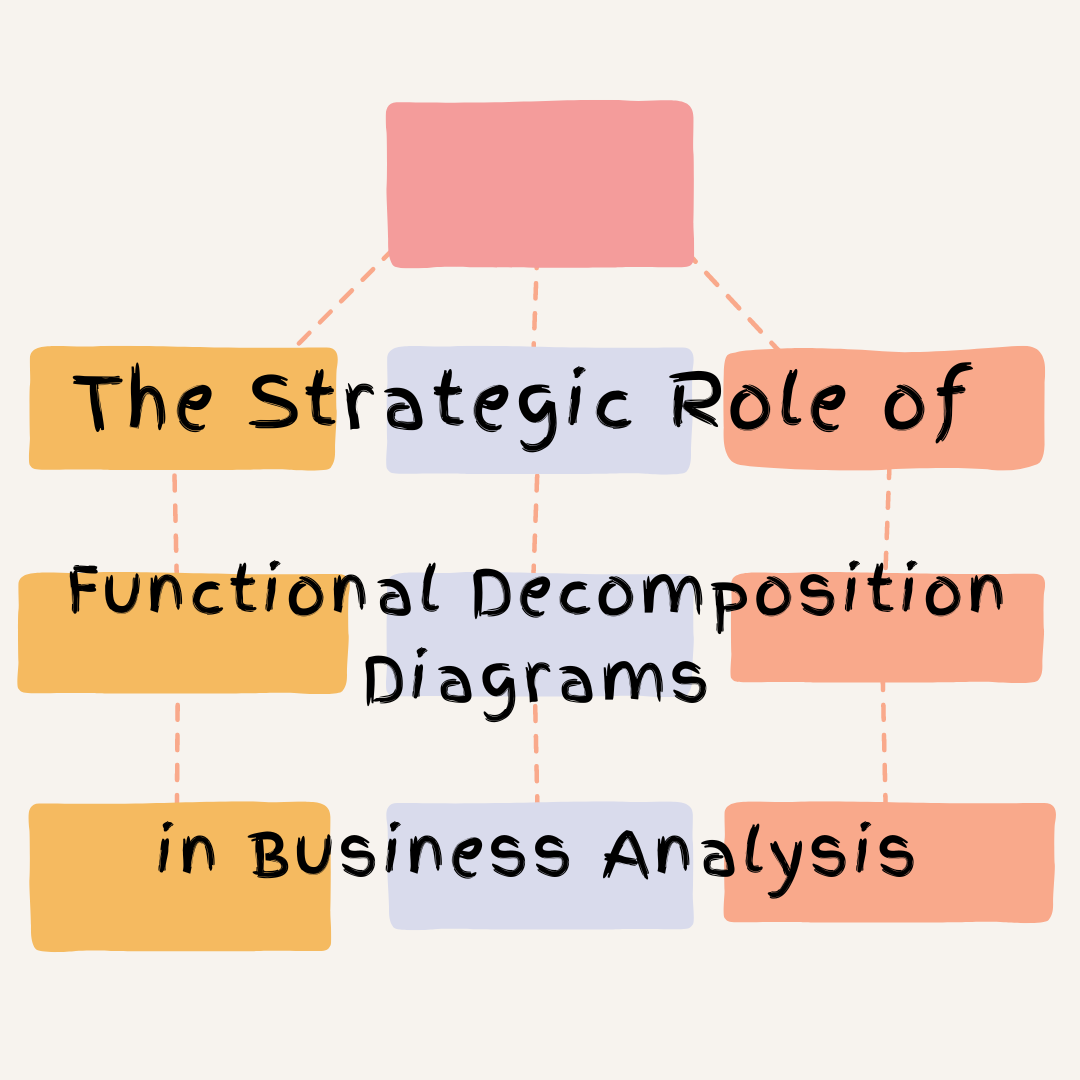Leveraging Functional Decomposition Diagrams in Scrum and Agile Projects for Enhanced Outcomes
In the agile ecosystem, where adaptability and incremental delivery govern project management, the use of Functional Decomposition Diagrams (FDDs) by Business Analysts (BAs) or Product Owners (POs) offers a structured approach to dissecting complex features into manageable tasks. This methodology not only aligns with the agile philosophy of breaking down work into smaller, more achievable increments but also enhances understanding, communication, and collaboration within Scrum teams. This article delves into how FDDs can be effectively utilized in Scrum events and Agile projects to achieve better project outcomes.
FDDs in the Agile Framework
Functional Decomposition Diagrams serve as a visual tool to break down complex systems, processes, or features into simpler, more understandable parts. In the context of Agile and Scrum, FDDs can be particularly beneficial during various Scrum events such as Sprint Planning, Backlog Refinement, and even during Sprint Reviews and Retrospectives, offering a clear roadmap of functionalities that need to be developed, tested, and implemented.
Enhancing Sprint Planning with FDDs
During Sprint Planning, BAs or POs can present the FDD to the development team to outline the breakdown of complex features into smaller, more digestible functions. This not only aids in the estimation process, as teams can more accurately gauge the effort required for each sub-function, but also ensures that all team members have a unified understanding of what needs to be accomplished during the sprint, thus enhancing transparency and alignment.
Think about it this way. Your team is trying to estimate the amount of effort for development and how the feature or function fits into the larger picture of the solution. This creates a deeper understanding of context. Without the context estimating - even designing the solution - are more difficult. This context shows the relationships between features and functions with the overall capabilities of the system or product. How does this user story relate to the overall capability of the product? We are building the solution for this user story but how does it fit into the whole and the relationships with other features and functions? Understanding those relationships leads to better understanding of the context and better solutions.
Splitting stories and combining stories is faced by all teams in sprint planning. Combining cards into larger cards and splitting card into smaller components are critical tools for teams to use to fit cards into a sprint. FDD starts the conversation about whether or not a card needs to be combined or split because it’s focused is on the function and feature as it relates to the story. A story without the relationship to a function is more difficult to design. The story explains the role and the goal but lacks focus on how the story fits into the overall capabilities and functions of the solution. Eventually, rework will creep into the process as cards are designed and developed without the goals in mind.
You say that the price you pay for emergent architecture - building the architecture, heirarchy, and structure of a solution as you go along - is higher amounts of rework. You could argue it’s an anti-pattern by using the FDD. In contrast, the FDD is the hierarchy and outline of a solution capabilities and functions. FDD is not a solution design.
FDD becomes the tool in which to align cards with functions. What if you knew all the cards that were associated with a specific function? Capability? Wouldn’t that help combine and split cards more effectively?
Streamlining Backlog Refinement
Backlog Refinement sessions can significantly benefit from the use of FDDs, as they provide a structured way to review and analyze the product backlog items. By decomposing larger user stories or epics into finer functional details, teams can prioritize work more effectively, identify dependencies early on, and ensure that backlog items are ready and well-defined for upcoming sprints, thereby improving the flow of work and reducing bottlenecks.
One of the beautiful ways an FDD contributes to better product backlog management is the ability to focus on a specific capability or function. When you are in the product management world, customer request or demand a change or improvement to the product. The product manager prioritizes those changes or enhancements to capabilities and functions. Typically product management prioritizes which capabilities and functions to add, modify, or remove. So how does the product owner groom the backlog to match those priorities? By aligning cards to specific functions - even multiple functions - it’s easy for the Product Owner to ensure prioritization is placed on the related cards.
Does the card need to be split? Look at the functions. If a card covers multiple functions or capabilities there is a good chance it would makes sense to split it apart. Since the prioritization from Product Management is focused on the function, cards are split to delivery the most value to the highest priority cards.
Facilitating Sprint Reviews with Clarity
During Sprint Reviews, FDDs can be used to demonstrate what has been accomplished in a sprint, showing how each piece of functionality contributes to the larger feature or system. This visual representation can enhance stakeholder understanding and feedback, as they can clearly see the progress made on each functional component, fostering more informed discussions about the product's development path.
Informing Sprint Retrospectives
In Sprint Retrospectives, FDDs can help teams reflect on the work completed, providing a framework to analyze what went well and what could be improved. By examining the completed parts of the diagram, teams can identify areas of the process that were challenging and explore ways to enhance efficiency in handling similar tasks in future sprints.
Lost functions? No cards for a function? The FDD helps teams discover the gaps before they become significant.
Agile Projects and Continuous Improvement
In broader Agile projects, FDDs facilitate continuous improvement and iterative development. As projects evolve, so too can the FDDs, with BAs or POs revising and updating the diagrams to reflect changes in scope, feedback from stakeholders, or new insights gained during development. This iterative approach ensures that the project remains aligned with user needs and business objectives, adapting to changes swiftly and effectively.
FDD is not carved in stone. It will change over time. As prioritization and business needs change, the FDD will change.
Simply Complexity for Better Outcomes
For Business Analysts and Product Owners working within Scrum and Agile methodologies, Functional Decomposition Diagrams offer a valuable technique for managing complexity and enhancing project outcomes. By integrating FDDs into Scrum events and leveraging them throughout Agile projects, teams can achieve greater clarity, improve estimation accuracy, facilitate stakeholder communication, and foster a culture of continuous improvement. Ultimately, the strategic use of FDDs can lead to more efficient sprint cycles, better-aligned product features, and higher project success rates, making them an indispensable tool in the Agile business analysis toolbox.
Unlock your full potential as a Business Analyst with our game-changing online course! Tailored for the analytical minds eager to lead, innovate, and transform, this course is your gateway to mastering the most effective business analysis techniques. Whether you're looking to excel in Agile, shine in Waterfall, or innovate in uncharted territories, our expert-led curriculum is designed to elevate your skills, boost your career, and make you the go-to strategist in any room. Join us, and become the catalyst for change your organization didn't know it needed!
Ready to up your business analyst game? Let’s explore 7 powerful techniques that are shifting the business analysis landscape with expert insight from business analysis pros.
7 Powerful Analysis Techniques Book
Amazon Kindle $9.99
Uncommon Book of Analysis Techniques Book
PDF Download $75.00



